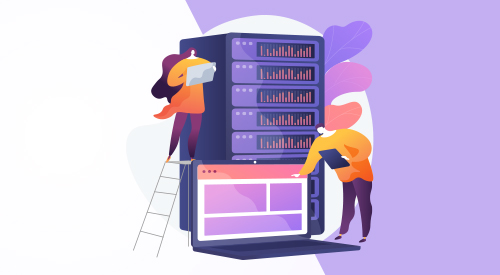

Lately, businesses across industries require a robust business intelligence system in order to keep innovating and staying ahead of the curve. Bettering business processes and direction relies heavily on the data the business is churning. If data is the oil of the 21st century, then business intelligence functions are lamps that are leading the way for extracted value. Data warehouses are a core part of business intelligence solutions. Here we look at some of the comparative points of 2 of the top data warehousing solutions in the market (BigQuery vs Redshift) and how to choose the best one for your needs.

Redshift and Google’s BigQuery are two comparable fully managed petabyte-scale cloud data warehouses. Although they are comparable in many aspects, anybody evaluating cloud data warehouses should take into account how their distinctive characteristics might support a company’s data analytics architecture.
What is BigQuery and Redshift?
Google BigQuery is an analytics data warehouse for giant datasets. It is an Infrastructure-as-a-Service (IaaS) and provides rapid querying capabilities for data sets that are too large to fit in memory. BigQuery is a cloud-hosted service provided by Google, so it requires no software installation, no maintenance, and no management. It is used to manage data sets consisting of billions of rows and petabytes of data.
Redshift is a data warehouse product that is capable of storing petabytes of data. It’s based on PostgreSQL, a reliable and powerful open-source database, and it’s optimized to work on Amazon’s cloud infrastructure. You can use Redshift to query and analyze data from various sources, including S3, RDS and Apache Hadoop. It can also be used as a data warehouse for a Business Intelligence (BI) application.
Things to consider when choosing a data warehouse –
Determine what type of data warehouse you need –
A data warehouse is actually a single data repository, but it’s often split into two repositories. One contains operational data and the other contains historical data. It may contain data from a variety of sources and it’s usually stored in a normalized format. So, before you get started with a data warehouse, you must first ask yourself: what kind of data warehouse do I need? The answer is not a simple one, as the answer depends on your business, the industry you’re in and the number of users who access the data.
Data warehouses are of three main types – Enterprise Data Warehouse (EDW), Operational Data Store (ODS), and Data Mart.
Enterprise Data Warehouse – Usually a collection of databases, EDW provides decision support services across the enterprise with a unified window for categorically organizing data.
Operational Data Store (ODS) – A complementary solution to an EDW, Operational Data Stores are a central database used as a data source for the Enterprise Data Warehouse.
Data Mart – a subset of a data warehouse a data mart is categorized subject wise, making specific data available to a specific group of users such as a business line or a team, for providing critical insights.
Key differences – Redshift vs BigQuery
- BigQuery is a serverless platform while Redshift is provisioned on clusters and nodes
- With BigQuery, a single table supports 10,000 columns, while Redshift manages 1,600 columns
- BigQuery comes with automatic management protocols, whereas Redshift may require periodic maintenance such as vacuuming tables, etc.
BigQuery vs Redshift performance
To find the best data warehouse product for your particular use case, you first must define your data warehouse needs and requirements. Then, you need to do a comparative analysis of the best data warehouse products. Redshift and BigQuery each have a thorough standing as leading data warehouse solutions. One of the key differences between the two is seen in the use cases that each deliver better on.
Businesses with large data mining operations, with multiple projects under a variety of conditions, and less predictable and inconsistent workflows, data warehousing solution with BigQuery would be a great option. BigQuery Omni also brings flexibility across clouds with its multi-cloud analytics solution that lets you cost-effectively access and securely analyze data across other cloud environments.
How does the pricing work out?
When you’re using data warehouses to help you make business decisions, it’s important that your spend on data warehousing can keep up with your company’s growth. If a data warehouse is too small, it will not be able to hold the data needed for data analysis. If a data warehouse is too big, it will be too expensive to maintain and may not be scalable for future growth. You need to know how much it will cost to run it and how much of a resource it will be.
BigQuery has good economical value for businesses with extensive, unpredictable and fluctuating query workload. BigQuery’s pricing for larger workloads work well in most business environments.
A data warehouse is the heart of any business. At Niveus, we help customers leverage the best practices in data warehousing, bringing the power of data to their fingertips. Contact us at biz@niveussolutions.com today to see how we can help you.











